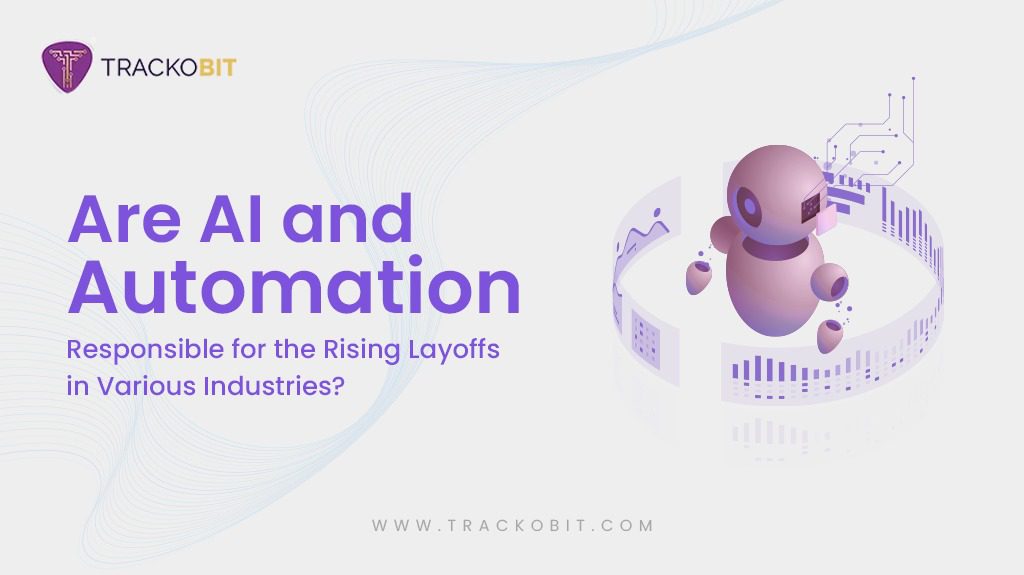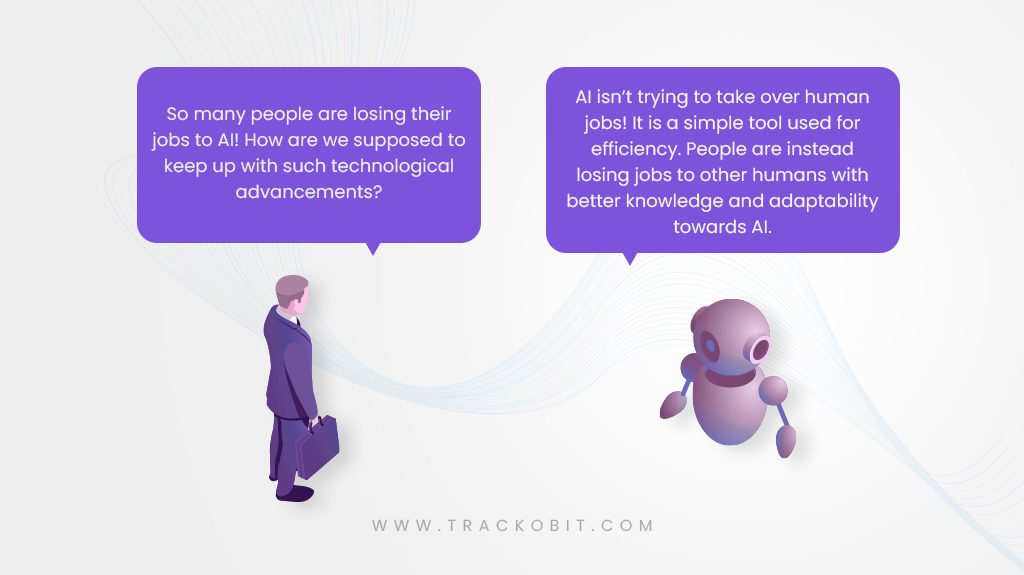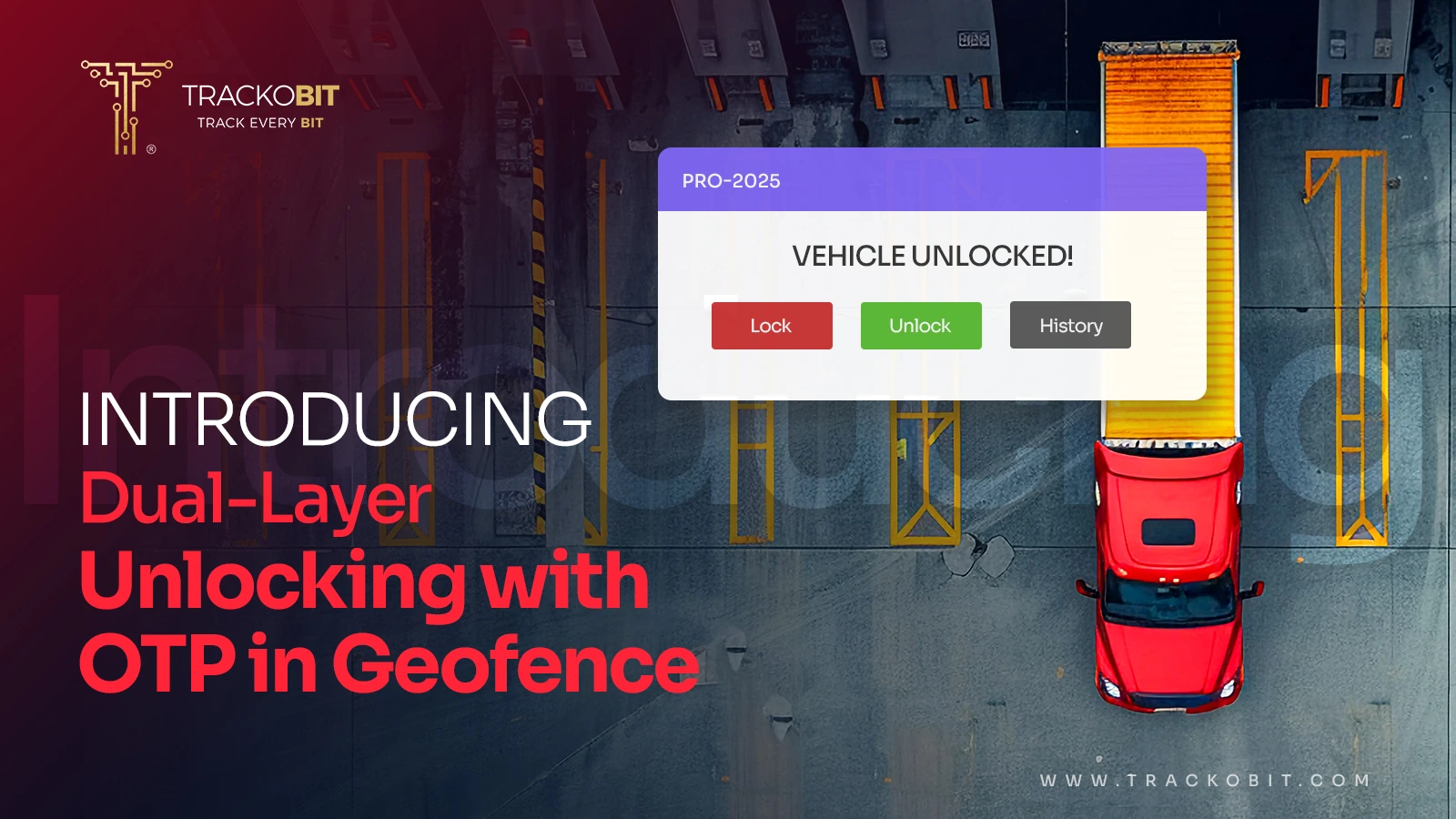-
TrackoBit
Manage commercial vehicles with the new-age Fleet Management Software
TrackoBit -
TrackoField
Streamline your scattered workforce with Field Force Management Software
TrackoField -
Features Resources
-
Blog
Carefully curated articles to update you on industrial trends. -
White Paper
Insightful papers and analysis on essential subject matters. -
Glossary
Explore an alphabetical list of relevant industry terms. -
What’s New
Get TrackoBit & TrackoField monthly updates here. -
Case Study
Explore the cases we solved with our diverse solutions. -
Comparisons
Compare platforms, features, and pricing to find your best fit.
-
About Us
Get to know TrackoBit: our team, ethos, values, and vision. -
Careers
Join the most dynamic cult of coders, creatives and changemakers. -
Tech Support
Learn about our technical support team and services in detail. -
Events
Check out the exhibitions where we left our marks and conquered. -
Contact Us
Connect with us and let us know how we can be of service.
Are AI and Automation Responsible for the Rising Layoffs in Various Industries?
- Author:Drishti Dua
- Read Time:7 min
- Published:
- Last Update: November 26, 2025
Table of Contents
Toggle
With the end of the financial year 2022-23 approaching, we have seen several companies laying off major workforces in various industries. This step taken by such big players in their respective sectors has left people hunting for a reason behind such steps.
Table of Contents
Toggle
The verdict? That the age of AI and automation is affecting the need for manual labour.
While the ongoing recession also has a lot to do with this step, people believe that technological advances play a huge role in layoffs. There are several factors playing behind companies laying off people in such high numbers. Understanding the pattern of the huge employee workforce losing their jobs is the only way to tackle this situation properly. Let us understand this in greater detail from the following sections.
What are AI and Automation?
Artificial Intelligence (AI) at its very core is the ability of computers or computer-controlled robots to do tasks usually executed by humans because they require human intelligence and discernment. Over the past years, people have been looking at ways to incorporate this technology into human driven operations to eliminate the challenges that manual operations pose.
Automation is the use of AI and machine learning to simplify human tasks and make them error free. A very apparent example of this is seen in our shopping habits. While traditionally, physical markets were the norm, the past decade has been a witness to the rise of the last mile delivery industry as a whole. We now have access to market goods right at our doorsteps within minutes.
Is the Adoption of AI a Threat to Manual Jobs?
Some people might argue that e-commerce is the reason why employment opportunities in the physical marketplaces have reduced significantly. Similarly, technological advancements are also blamed for the recent large-scale layoffs.
It is true that several jobs previously occupied by the human workforce are being taken over by technological tools. But this does not automatically translate to a deficit in employment opportunities for people. Continuing with the example we looked at in the previous situation, let us understand how this is possible.

Several shops previously operating in physical markets have started affiliating themselves with online shopping platforms, resuming their sales. They now deliver their goods directly to the customers. While the workforce needed in the shop itself reduces, this system creates several employment opportunities for managers that have to now overlook the packaging and delivery of goods. The number of employees that work in the supply chain has also increased significantly, as businesses need more delivery executives.
Looking at the layoffs, it is safe to say that they are less about lowered employment rates and more about a shift in the sectors that require larger workforces.
How Can AI and Automation be Seen as Ways to Increase Employment Opportunities?
Instead of looking at the shift to automation as something completely negative, it will be beneficial for us to see how we can benefit from these ideas. Let us look at some ways that this can be possible:
Understanding the Adoption of AI
So what exactly is AI? And how is it affecting the industry I work in?
Just like the times of industrialisation, we are starting to see the potential of AI replacing several human operations. But as we saw in the previously stated example, it does not necessarily mean that there is a deficit in job opportunities for people.
Companies now need people to supervise the tasks completed by AI and not ones that execute labour-intensive tasks. They need to be knowledgeable of the ongoing developments and should be able to operate smart AI tools and should be fast learners to keep up with the ever changing world of technology.
AI as we see it today is simply an imitation of human thought processes. This means that even for automation to be error proof, human intelligence and EQ are needed for decision-making.
Training for Better Managerial Roles
So how can workforces prepare for the age of AI?
After understanding the kind of roles that employees can now fill in the technological world, the next step is preparing for these posts. Education and training for overlooking automated tasks are very important.
But there might be an argument that the employees already working do not have the accurate means of training for these jobs, especially having worked in specific industries for most of their lives. It is essential that companies take the initiative to train their employees to do better with their AI integrative model of operations.
AI and Automation In Context to the Tracking Industry
When looking at the fleet industry, automation has been all the rage in recent years. With fleet management software taking over businesses to help them optimise their operations, it is safe to say that connected vehicles are surrounding us. But how is this software promoting automation for various industries? Let us learn how:
How is Automation Helping the Fleet Industry?
Automation via fleet management software can be helpful in many ways. It has several features that make the management of even large fleets simplified. Some of the features that make this possible are:
- Telematics: What once could only be a part of people’s imagination has now become a part of our daily life. Telematics is the transmission of data over a long distance. This system can help fleet businesses maintain their connected vehicles and collect data necessary for optimisation. Thus, crushing any chances of inconsistencies and errors along the way.
- Automation Solutions: The solutions that the fleet management software provides fleet businesses can help managers plan and supervise their businesses a lot better. These solutions can also ensure that no pain point in the fleet operations goes unnoticed. These can include high fuel costs, frequent accidents, unplanned routes and so on.
- Scheduled Alerts: The system has several automated alerts that can make vehicle maintenance a lot better. All the solutions have pre-decided events which when triggered can alert managers to investigate the situation on the road. The servicing and maintenance features allow managers to set their automated alerts so as to never miss any check-up.
- Report Generation: The fleet management system ensures that the system it collects gets processed correctly and segregated into reports. The system decodes binaries and forms analytics readily available for drivers to download and study. Thus, making the optimisation process much simpler.
The Future of AI and Automation in the Fleet Industry
While we have seen a rise in the number of fleet businesses adopting automation for their vehicle, we are far from reaching the full potential of this technology. Here are three ways that we believe technology can change the fleet industry:
- Machine Learning: Machine learning is the technology that understands long term data and incorporates its finding in the decision making process. It can help fleet businesses categories, segregate and use thor data for optimisation a lot better without much human interventions. Thus, making the process free of any errors.
- Cameras: While video telematics as we see it today performs the role of monitoring, integrating custom AI development can help fleet businesses incorporate predictive technology into their operations. For example, the cameras can help drivers navigate their surroundings a lot better, predicting any potential danger and alerting the driver. It can also be integrated with autonomous vehicles. It can allow the system to implement operations like auto braking, parking and so on.
- Driver Training and Coaching: AI can help process data a lot quicker. Thus, the system can devise training programs for the drivers to help them understand the challenges they face on the roads and better equip them to find solutions. This can help boost the overall quality of the fleet business with more reliable drivers. AI can also devise ways to train drivers via one-on-one sessions.
In the End
While AI and automation may have some part to play in the recent layoffs we have been seeing in the market, the picture is much bigger than it seems.
“Automation is driving the decline of banal and repetitive tasks.” – Amber Rudd
A shift in the employment sector does not mean a depreciation in employment. AI and automation might have led to people losing their jobs, but at the same time, several new kinds of opportunities have come up as well. Reducing manual labour can be the pathway to accuracy and higher productivity.
Fleet management software is a similar automation system that can help the fleet industry progress and also open up employment chances for several managerial posts.
Drishti Dua, a Content Contributor at TrackoBit has a rich background in literature and professional expertise in SaaS and technology writing. She has carved her niche in the space of Geospatial techn... Read More
Related Blogs
-

What Makes TrackoBit’s Video Telematics Software Truly Next-Gen?
Shemanti Ghosh December 17, 2025TrackoBit’s video telematics software blends smart video intelligence with full server control. The result? Superior fleet reliability and safety.
-

Plug, Pair, Perform TrackoBit Introduces BLE Sensor Integration
Tithi Agarwal November 26, 2025TrackoBit’s BLE Sensor Integration enables wireless, real-time monitoring with faster installs and accurate insights. It improves fleet efficiency, visibility, and…
-

How to Use Driver Behavior Reports as a Sales Hook to Close Big Fleets
Tithi Agarwal October 16, 2025TrackoBit’s driver behavior reports empower fleet providers to win big contracts by showcasing safety, efficiency, and measurable ROI.
-

TrackoBit’s Unlocking in Geofence with OTP: Elevating Cargo Protection
Tithi Agarwal September 16, 2025TrackoBit’s latest feature – Unlocking in Geofence with OTP lets you lock out theft and unlock cargo only at the…

Subscribe for weekly tips to optimize your fleet’s potential!
Your inbox awaits a welcome email. Stay tuned for the latest blog updates & expert insights.
"While you're here, dive into some more reads or grab quick bites from our social platforms!"Stay Updated on tech, telematics and mobility. Don't miss out on the latest in the industry.
We use cookies to enhance and personalize your browsing experience. By continuing to use our website, you agree to our Privacy Policy.


































